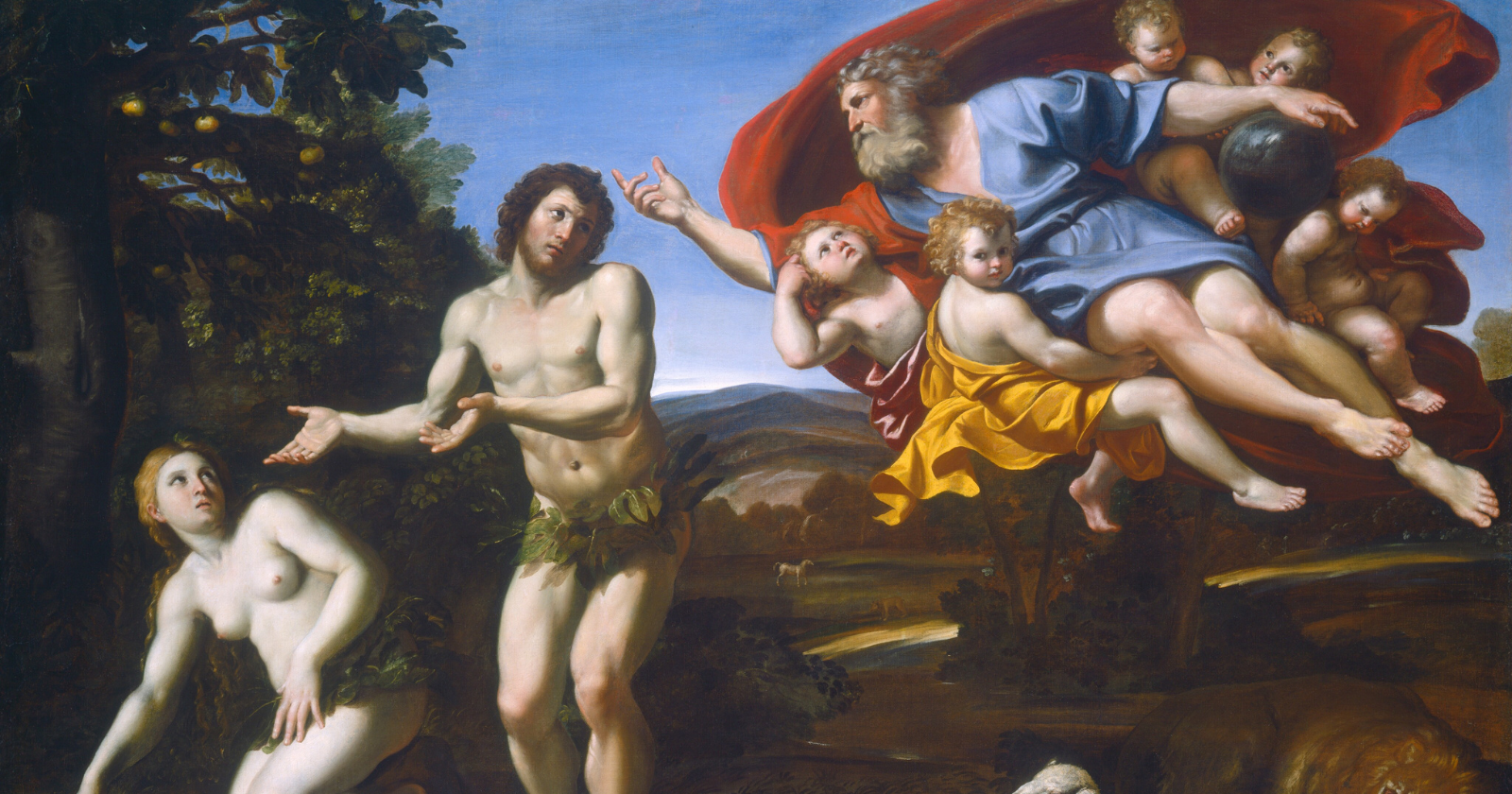“Your word is a lamp to my feet and a light to my path.”
Psalm 119:105
The Canon of the Old Testament is a foundational element of the Christian faith, representing a collection of texts central to the beliefs and traditions that have shaped Christianity.
Composed of historical narratives, laws, prophecies, and wisdom literature, this sacred anthology offers a rich tapestry of theological insights and moral teachings.
For modern Christians, engaging with the Old Testament canon is not merely an academic exercise — it’s a journey into the very roots of faith, providing guidance for contemporary life.
This article will delve into the main ideas, composition, and key themes of the Old Testament canon, offering a deeper understanding of your spiritual path.
Composition of the Canon
The Old Testament, known in Hebrew as the Tanakh, is not merely a historical account. It’s a narrative of God’s unfailing love for humanity, despite our transgressions.
As a matter of fact, it introduces the promise of redemption — a theme that reverberates through its text.
This sacred compilation is divided into three distinct parts:
- The Torah, also called the Pentateuch or Law;
- The Nevi’im or Prophets;
- The Ketuvim, often referred to as the Writings or Hagiographa.
Each section plays a critical role in Jewish religious life and identity.
Interestingly, Jesus himself acknowledged this threefold nature of Scripture, citing “the Law of Moses, the Prophets, and the Psalms” in Luke 24:44.
The majority of these texts were originally penned in Hebrew. However, certain passages were written in Aramaic, reflecting the linguistic diversity of the times.
For example, Genesis 31:47 and substantial portions of Daniel are some of the passages in Aramaic.
Genesis 1:1 encapsulates the profound simplicity and depth of these scriptures:
“In the beginning, God created the heavens and the earth.”
3 parts of the Old Testament

1) The Law (Torah or Pentateuch)
The Law, or Torah, is like the opening act of an epic saga, setting the stage for everything that follows in the Old Testament.
This initial part of the Old Testament is made up of the first five books:
- Genesis
- Exodus
- Leviticus
- Numbers
- Deuteronomy—
It starts with the creation of the world, laying down the story of how everything began, from the stars in the sky to the fish in the sea, and, of course, humans.
But it’s not just a creation story — it’s also about beginnings and promises.
Think about Abraham setting off on a journey with nothing but faith, or Moses leading a whole nation out of Egypt with the sea parting before them.
The Torah is where we find the Ten Commandments, those fundamental rules that have shaped ethical conduct for millennia.
It’s a mix of narratives, laws, and moral teachings that guide the people of Israel on how to live in a covenant relationship with God.
From dietary laws in Leviticus to the epic adventures in Exodus, the Torah lays down the blueprint for what it means to be God’s chosen people.
In essence, it’s fascinating, complex, and at times, a real puzzle, but always aims to teach us about faith, obedience, and the journey toward a promised land.
2) The Prophets (Neviim)
The Prophets, or Neviim, is where the action of the Old Testament heats up, diving deep into the narratives of those chosen to be God’s messengers.
But don’t think that this section is just a collection of prophecies. The truth is that it’s a rollercoaster of stories about courage, warning, and hope, spanning from the momentous conquests in Joshua to the stirring oracles in Isaiah.
Now, let’s take a look at its two main parts:
1) The Former Prophets, which include Joshua, Judges, Samuel, and Kings.
This part narrates the history of Israel from the settlement in Canaan to the Babylonian exile. It’s here we meet heroes and villains, kings and rebels, and witness the unfolding of divine justice and mercy.
2) Then there are the Latter Prophets — Isaiah, Jeremiah, Ezekiel, and the Twelve Minor Prophets.
Latter Prophets is about challenging the people of Israel to return to God’s ways amidst apostasy and adversity.
By the end of the second century BC, these prophetic works were universally recognized as inspired Scripture, a testament to their enduring impact on faith and ethics.
Simply put, the Prophets tell us of a God who yearns for His people to live in justice and righteousness, offering both dire warnings against disobedience and beautiful visions of hope and restoration.
Each prophet, with their unique voice, contributes to a rich, multifaceted dialogue between God and humanity, making the Neviim a compelling read for anyone interested in the struggles and triumphs of faith.
3) The Writings (Kethuvim or Hagiographa)
And the final book and eclectic finale final of the Old Testament is the Writings, or Kethuvim (Hagiographa).
It’s a collection that spans poetry, wisdom literature, and more, offering a kaleidoscope of perspectives on faith, life, and the human condition.
This section is where you’ll find the deeply moving poems of Psalms, the existential musings of Ecclesiastes, and the timeless love song that is the Song of Songs, alongside historical narratives like Chronicles, Ezra, and Nehemiah.
Let’s be honest, all this provides a post-exilic look at Israel’s history and restoration.
While the Psalms were uniformly regarded as Scripture, the final books of the Writings took time to be clearly defined.
It is now known with the discovery of the Dead Sea Scrolls that the Writings or Hagiographa often varied with each religious sect.
This variation highlights the diverse ways in which different communities of faith engaged with these texts, each finding unique spiritual value and meaning in them.
From the heartfelt prayers and laments of Psalms to the practical wisdom of Proverbs and the reflective questions of Job, the Writings invite us into a deep, contemplative engagement with God and the world.
They challenge us to wrestle with big questions of justice, suffering, and the pursuit of a righteous life, all while offering the comforting assurance of God’s sovereignty and the possibility of joy and gratitude in everyday life.
The Writings, with their rich diversity, serve as a testament to the multifaceted nature of faith, inviting believers across generations to find solace, wisdom, and inspiration.
Key themes of the Old Testament
Once you start reading the Old Testament, you’ll notice that several key themes emerge as central messages.
These themes provide a foundation for understanding the nature of God, the relationship between God and humanity, and the moral and spiritual lessons meant to guide the faithful.
Let’s break down these themes:
- Divine Love and redemption: Throughout the Old Testament, God’s love for His creation is evident, as is His plan for redemption through a promised Savior.
- Obedience and sin: The consequences of disobedience and sin are contrasted with the blessings of obedience to God’s laws.
- Prophecy and fulfillment: The Old Testament is rich with prophecies, many of which Christians believe are fulfilled in the New Testament.
- Covenant relationship: The covenants between God and His people, such as those with Abraham and Moses, underscore a unique relationship based on faithfulness and promise.
- Justice and righteousness: The call to live justly and righteously is a recurring imperative, emphasizing social justice and personal morality.
These themes not only reflect the historical context in which they were written but also offer timeless wisdom that continues to resonate with believers today.
What are the 5 canonical variations of the Old Testament?
The Old Testament canon varies between Christian denominations due to historical and theological differences.
The Catholic Church and Eastern Orthodox churches include books in their canon that Protestant Bibles do not.
These additional texts, known as the deuterocanonical books, were part of the Septuagint and accepted by early Christians but later disputed during the Reformation.
Within Catholicism, important Councils such as that of Hippo in 393 AD, under the influence of St. Augustine, affirmed the inclusion of these books:
- Tobit
- Judith
- Wisdom
- Sirach
- Baruch
- 1 and 2 Maccabees
- Additions to Esther and Daniel
The Eastern Orthodox Churches went even further, incorporating texts like:
- 1 Esdras
- Psalm 151
- 3 Maccabees
Conversely, Reformers like Martin Luther questioned the divine inspiration of these additional texts, leading to their categorization as “Apocrypha” and their separation from the canonical books in Protestant Bibles.
This divergence highlights the complexities of biblical canon formation and the influences of cultural, linguistic, and religious contexts on what is considered Scripture.
It underscores that our understanding of the Old Testament is not merely a matter of texts but also a reflection of faith traditions and historical developments.
A list of canonical books
Navigating through the Old Testament can reveal differences depending on whether you’re looking through an Orthodox, Catholic, or Protestant lens.
Each tradition organizes and recognizes certain books, reflecting a rich diversity in how ancient scriptures are honored and read.
Below is a simplified comparison to help illustrate these variations:
| Category | Orthodox | Catholic | Protestant |
|---|---|---|---|
| The Law | Genesis | Genesis | Genesis |
| Exodus | Exodus | Exodus | |
| Leviticus | Leviticus | Leviticus | |
| Numbers | Numbers | Numbers | |
| Deuteronomy | Deuteronomy | Deuteronomy | |
| Historical Books | Joshua | Joshua | Joshua |
| Judges | Judges | Judges | |
| Ruth | Ruth | Ruth | |
| I Samuel | I Samuel | I Samuel | |
| II Samuel | II Samuel | II Samuel | |
| I Kings | I Kings | I Kings | |
| II Kings | II Kings | II Kings | |
| I Chronicles | I Chronicles | I Chronicles | |
| II Chronicles | II Chronicles | II Chronicles | |
| I Esdras (A) | |||
| Ezra | Ezra | Ezra | |
| Nehemiah | Nehemiah | Nehemiah | |
| Tobit | Tobit | ||
| Judith | Judith | ||
| Esther | Esther | Esther | |
| Maccabees I | Maccabees I | ||
| Maccabees II | Maccabees II | ||
| Maccabees III | |||
| Wisdom Books | Job | Job | Job |
| Psalms (151) | Psalms (150) | Psalms (150) | |
| Proverbs | Proverbs | Proverbs | |
| Ecclesiastes | Ecclesiastes | Ecclesiastes | |
| Song of Songs | Song of Songs | Song of Songs | |
| Wisdom | Wisdom | ||
| Sirach | Sirach | ||
| The Prophets | Isaiah | Isaiah | Isaiah |
| Jeremiah | Jeremiah | Jeremiah | |
| Lamentations | Lamentations | Lamentations | |
| Baruch | Baruch | ||
| Letter of Jeremiah | |||
| Ezekiel | Ezekiel | Ezekiel | |
| Daniel | Daniel | Daniel | |
| Hosea | Hosea | Hosea | |
| Joel | Joel | Joel | |
| Amos | Amos | Amos | |
| Obadiah | Obadiah | Obadiah | |
| Jonah | Jonah | Jonah | |
| Micah | Micah | Micah | |
| Nahum | Nahum | Nahum | |
| Habakkuk | Habakkuk | Habakkuk | |
| Zephaniah | Zephaniah | Zephaniah | |
| Haggai | Haggai | Haggai | |
| Zechariah | Zechariah | Zechariah | |
| Malachi | Malachi | Malachi | |
| Total Books | 49 | 46 | 39 |
Diverse manuscripts
The Old Testament has been preserved in a rich tapestry of languages, including Hebrew, Aramaic, and Greek.
This linguistic diversity stems from the Diaspora, as the Jewish people spread beyond Palestine’s borders.
Crucial historical moments like the Babylonian Exile under Nebuchadnezzar led to deportations and subsequent settlements in foreign lands, which in turn influenced the transmission of biblical texts.
During the Exile, many Jews also settled in Egypt, particularly in Alexandria, where the Greek language and culture flourished following Alexander the Great’s conquests.
It was here that the Greek Septuagint, an ancient translation of Hebrew Scripture, was born. This translation held significant sway during Jesus’ era and was widely read, even cited extensively in the New Testament.
The manuscripts that have carried these ancient words to our present day include:
- The Greek Septuagint from Alexandria
- The Dead Sea Scrolls of the Essenes
- The Masoretic Hebrew text from Tiberias, Galilee
- The Targumim, Aramaic translations of Old Testament books
- The Aramaic Peshitta Bible
Each manuscript tradition has contributed to the variances seen across different Old Testament canons among Christian denominations today.
Luke’s contribution and perspective
“Luke, the beloved physician” (Colossians 4:14), brings a unique and invaluable perspective to the Bible, standing out as the only Gentile author in a sea of Jewish voices.
As a close companion of Paul, Luke’s contributions extend far beyond just adding another narrative. He bridges the gap between the life of Jesus in his Gospel and the early church’s explosive growth in the Acts of the Apostles.
Luke’s narrative is deeply shaped by his background as a physician and a Gentile, offering a meticulous and compassionate viewpoint.
In fact, he emphasizes the universality of Jesus’ message. This, in turn, highlights His interactions with the marginalized and emphasizes His role as a light for revelation to the Gentiles (Luke 2:32).
This perspective is vital, as it underscores the inclusive nature of Christianity, a religion not just for the Jews but for everyone, regardless of their background.
Through the Acts of the Apostles, Luke continues to illustrate how the early church navigated its mission in a diverse and often hostile world.
How does the Old Testament guide us?
“Teach me your way, O Lord, that I may walk in your truth.”
Psalm 86:11
This plea from the Psalms encapsulates the desire for divine guidance that permeates the Old Testament.
Let’s face it: for modern Christians, the Hebrew Scriptures are not just historical documents. They are living texts that offer wisdom for every aspect of life.
The Torah instructs us in righteousness, the Prophets call us to justice, and the Writings provide solace and insight into the human condition.
Engaging with these texts allows believers to navigate life’s complexities with a foundation rooted in God’s eternal love and His promise of redemption.
They serve as a compass for our moral and spiritual journey, encouraging us to reflect on our actions and grow in our faith.
Final thoughts: Deepening biblical understanding
In conclusion, the Canon of the Old Testament stands as a testament to the rich history and enduring spiritual legacy of the Judeo-Christian tradition.
For seekers delving into its depths, it provides a framework for understanding how God’s revelation has been received and preserved through time.
These ancient texts, from the Law to the Prophets to the Writings, invite readers into a deeper exploration of faith, morality, and the divine nature.
Moving forward, engaging with these scriptures requires thoughtful study and reflection. It is through this commitment that one can gain insights into the complexities of God’s word and its application in contemporary life.
The Canon of the Old Testament holds essential lessons for living a life aligned with spiritual truths, offering wisdom that transcends time and cultural boundaries.














